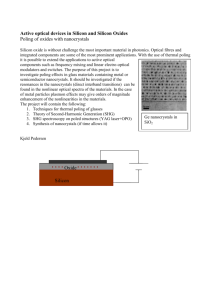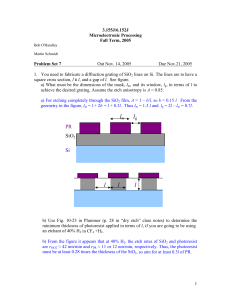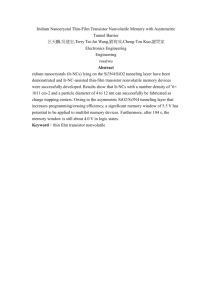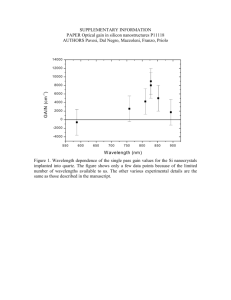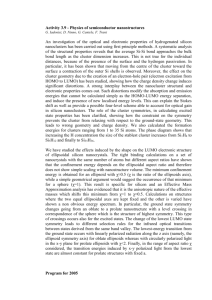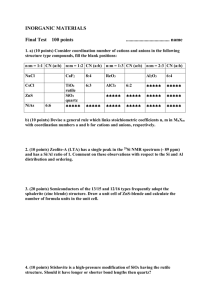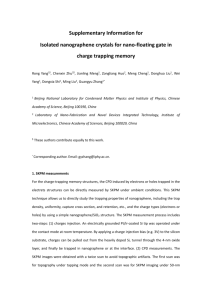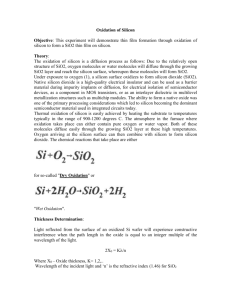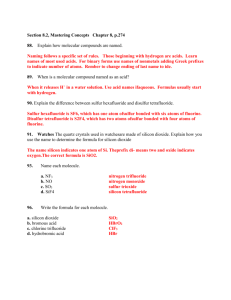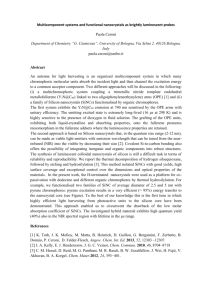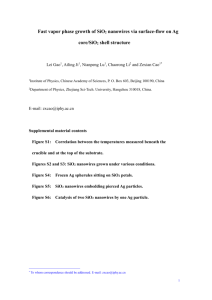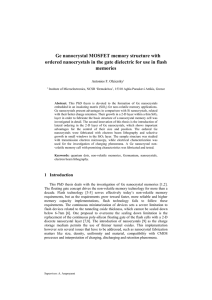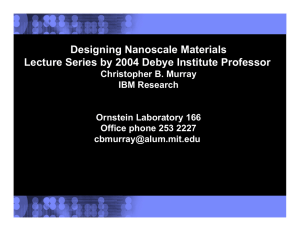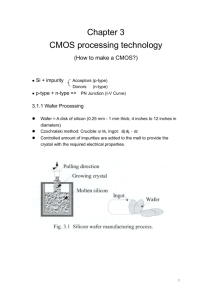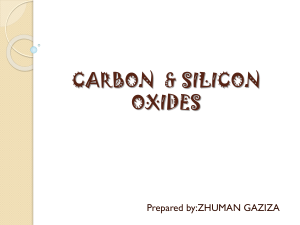Porous and nanocrystalline silicon exhibit strong
advertisement
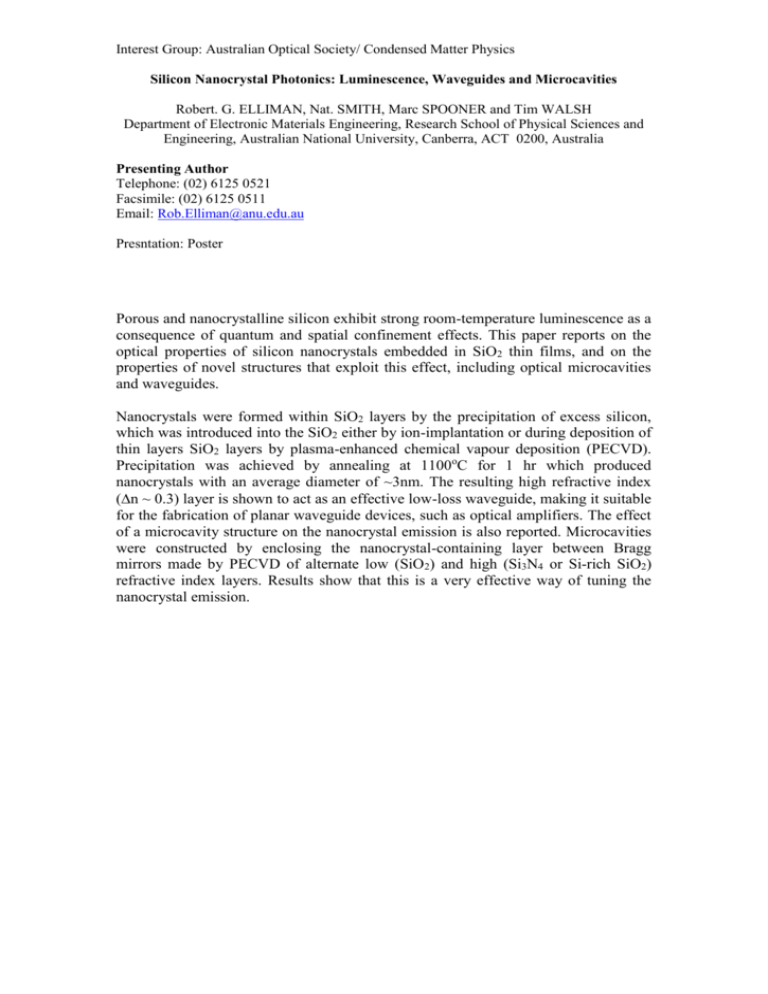
Interest Group: Australian Optical Society/ Condensed Matter Physics Silicon Nanocrystal Photonics: Luminescence, Waveguides and Microcavities Robert. G. ELLIMAN, Nat. SMITH, Marc SPOONER and Tim WALSH Department of Electronic Materials Engineering, Research School of Physical Sciences and Engineering, Australian National University, Canberra, ACT 0200, Australia Presenting Author Telephone: (02) 6125 0521 Facsimile: (02) 6125 0511 Email: Rob.Elliman@anu.edu.au Presntation: Poster Porous and nanocrystalline silicon exhibit strong room-temperature luminescence as a consequence of quantum and spatial confinement effects. This paper reports on the optical properties of silicon nanocrystals embedded in SiO2 thin films, and on the properties of novel structures that exploit this effect, including optical microcavities and waveguides. Nanocrystals were formed within SiO2 layers by the precipitation of excess silicon, which was introduced into the SiO2 either by ion-implantation or during deposition of thin layers SiO2 layers by plasma-enhanced chemical vapour deposition (PECVD). Precipitation was achieved by annealing at 1100oC for 1 hr which produced nanocrystals with an average diameter of ~3nm. The resulting high refractive index (n ~ 0.3) layer is shown to act as an effective low-loss waveguide, making it suitable for the fabrication of planar waveguide devices, such as optical amplifiers. The effect of a microcavity structure on the nanocrystal emission is also reported. Microcavities were constructed by enclosing the nanocrystal-containing layer between Bragg mirrors made by PECVD of alternate low (SiO2) and high (Si3N4 or Si-rich SiO2) refractive index layers. Results show that this is a very effective way of tuning the nanocrystal emission.

